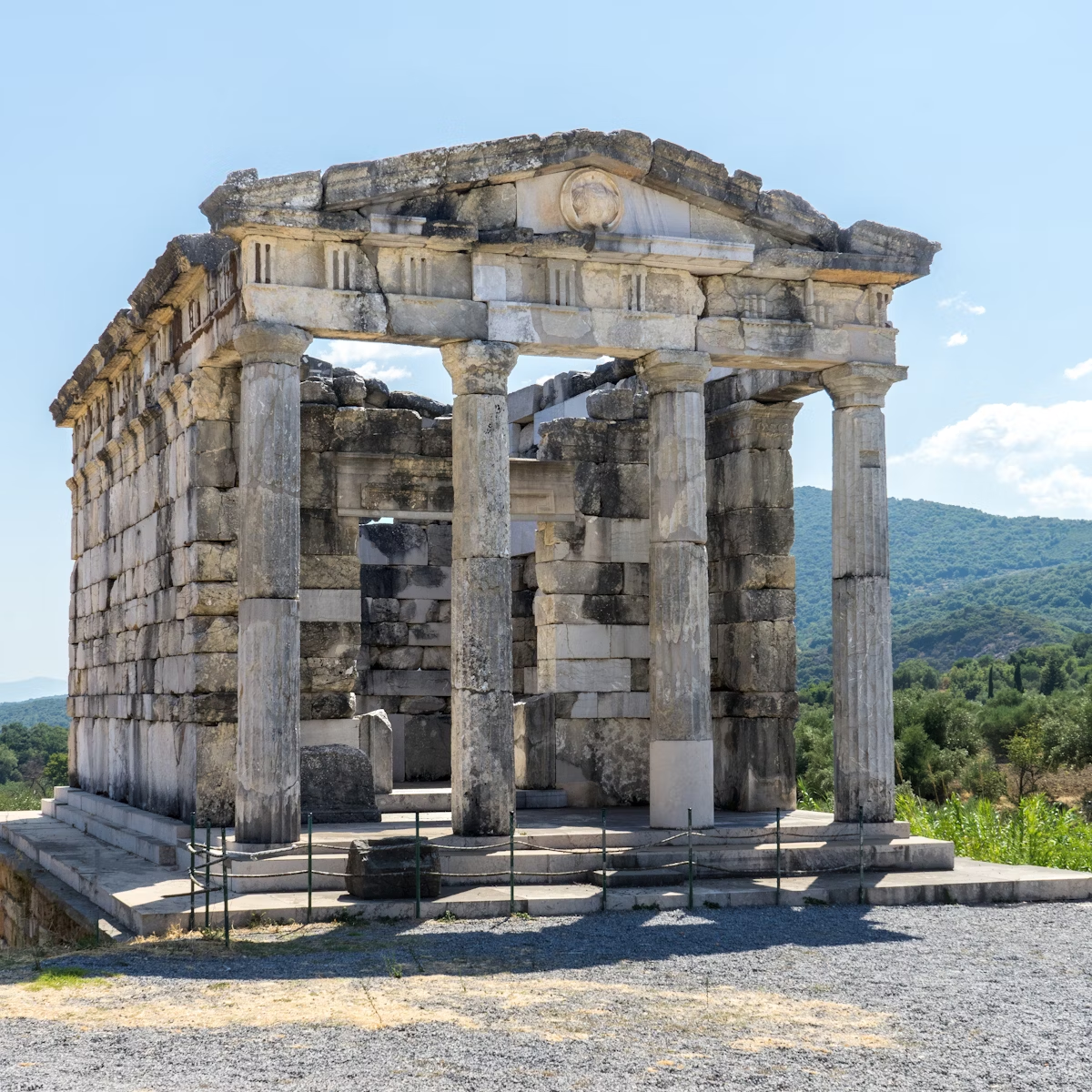The best preserved of all Mycenaean palaces lies 17km north of Pylos and is a thrilling sight. It's described in Homer's 'Odyssey' as the court of the hero Nestor, who took part in the voyage of the Argonauts and sent 90 ships to fight in the Trojan War. Originally a two-storey building, the palace’s walls stand up to 1m high, and from the raised walkways and explanatory text you get a good idea of the layout of a Mycenaean palace complex.
The main palace was a building of many rooms. The largest, the throne room, was where the king dealt with state business. In its centre was a large circular hearth surrounded by four ornate columns that supported a balcony. Surrounding the throne is the sentry box, pantry, waiting room, a vestibule and, most fascinating, a bathroom with a terracotta tub still in place. In this tub, according to legend, Polycaste, Nestor's youngest daughter, bathed the hero Telemachus. Archaeologists found small ceramic cups used for bathing and ladling aromatic oils still in place. The palace was destroyed by fire in around 1200 BC and burned ceramic debris in another room clearly reveals where a shelf of crockery collapsed.
The remains of an earlier palace are alongside, as are buildings revealed to have been workshops and a wine cellar. In an information kiosk on your way to the ticket office is good background, including information about the famous decipherment of Linear B, which was revealed to be an ancient form of Greek.
Many of the finds, including fragments of the palace frescoes and copies of some of the Linear B script tablets – the first to be discovered on the mainland – are housed in the museum in the nearby village of Chora.
Near the car park is an impressively reconstructed tholos (Mycenaean beehive-shaped tomb).






